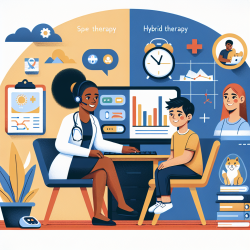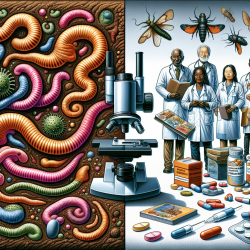Introduction
Partner notification is a critical component in public health strategies aimed at curbing the spread of HIV. The recent research article, Partner Notification: A Community Viewpoint, highlights the complexities and ethical considerations surrounding partner notification services. This blog post explores how practitioners, especially those involved in online therapy services like TinyEYE, can enhance their skills by implementing data-driven outcomes from this research or by pursuing further investigation into the topic.
Understanding Partner Notification
Partner notification involves trained health workers asking individuals diagnosed with HIV about their sexual or injecting partners and, with consent, contacting these partners to offer HIV testing services. This process can be passive, where the individual discloses their status to partners, or assisted, where a provider does so on their behalf. The World Health Organization (WHO) provides guidelines that emphasize consent, confidentiality, and connection to services.
Challenges and Ethical Considerations
While partner notification is a valuable tool, it is fraught with challenges, particularly for marginalized groups such as immigrants, LGBTQ+ individuals, and people who use drugs. Violations of privacy and coercive practices are significant concerns. Practitioners must be aware of these issues and strive to implement partner notification services ethically and sensitively.
Data-Driven Recommendations for Practitioners
- Voluntary Services: Ensure that partner notification services are voluntary and based on informed consent. This is crucial for building trust and ensuring ethical practice.
- Community Engagement: Involve community members, especially those from marginalized groups, in the design and evaluation of partner notification services. This engagement can help tailor services to meet the unique needs of these populations.
- Training and Sensitization: Train healthcare providers to deliver rights-based services that respect the privacy and dignity of all individuals. Sensitization to the specific needs of marginalized groups is essential.
- Comprehensive Services: Integrate partner notification with other health services, such as mental health support and violence prevention, to provide holistic care.
- Risk Assessment: Conduct thorough risk assessments for violence and stigma before offering partner notification services. This can help mitigate potential harm to individuals.
Encouraging Further Research
Practitioners should not only implement existing recommendations but also engage in further research to explore innovative approaches to partner notification. Data-driven research can provide insights into effective strategies and help refine practices to better serve diverse populations.
Conclusion
By incorporating the recommendations from the research on partner notification, practitioners can enhance their skills and contribute to more ethical and effective public health practices. For those interested in delving deeper into this topic, the original research paper offers a wealth of information and can be accessed here: Partner Notification: A Community Viewpoint.










